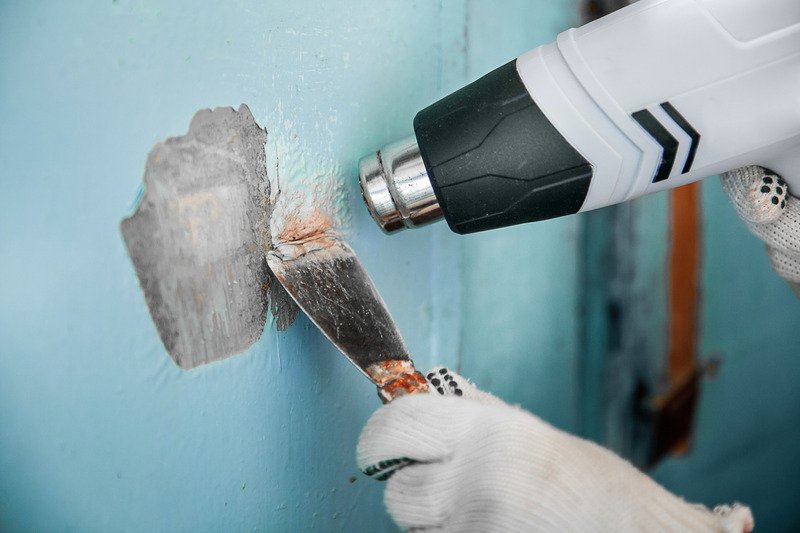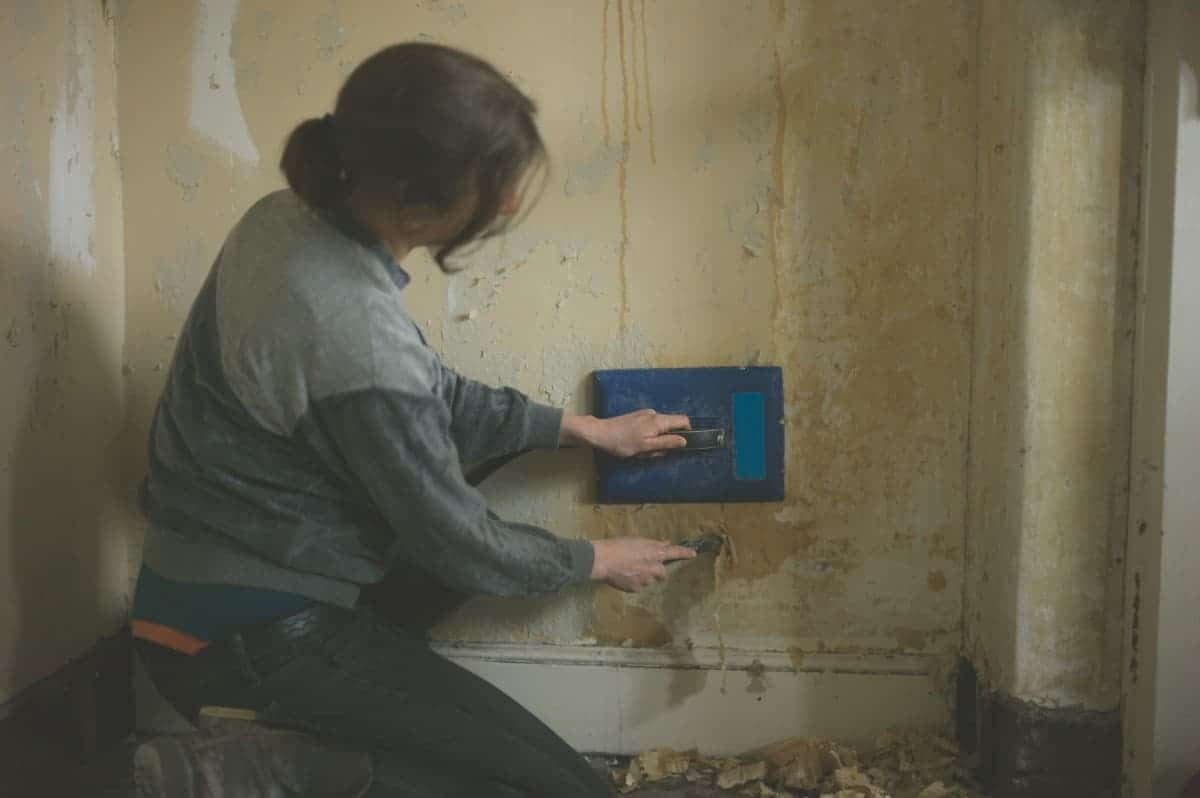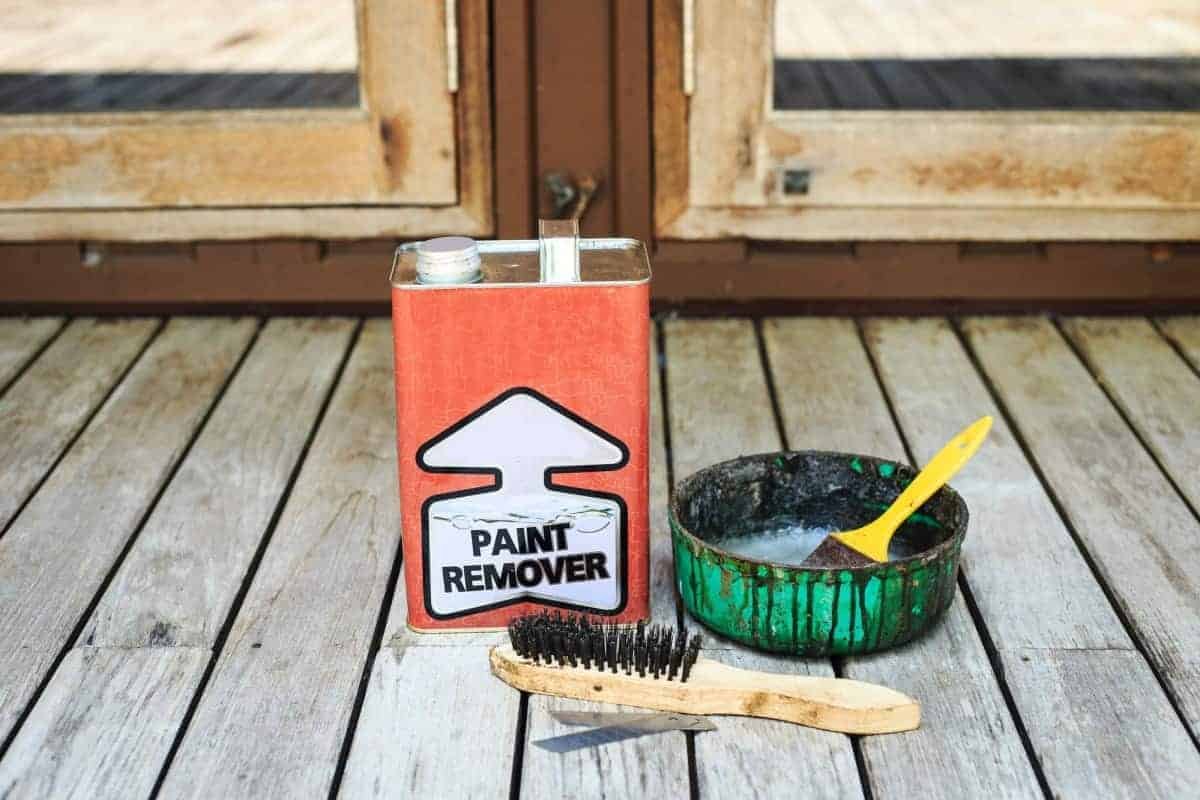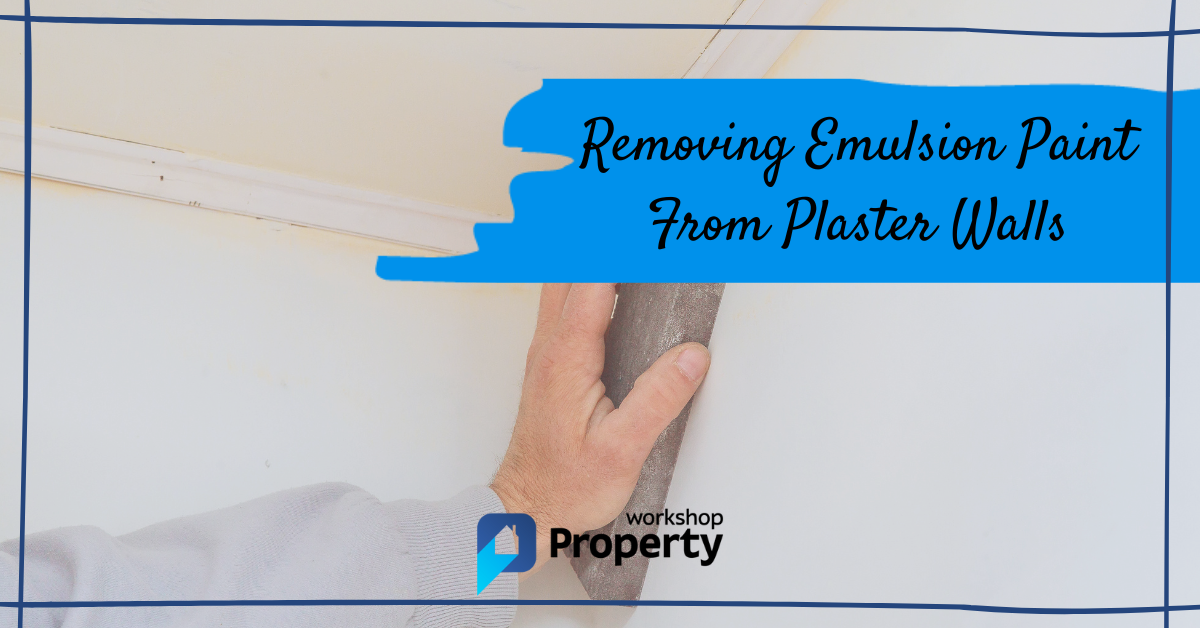I’ve renovated many homes over the last twenty years, so I understand the challenges of removing emulsion paint from plaster walls.
In this DIY guide, I’ll show you step-by-step how to remove emulsion paint from plaster while avoiding the health hazards of lead paint.
Why Remove Paint From Plaster Walls?
In many cases, you can paint or paper over emulsion, but there are two circumstances where it’s better to remove it.
- The paint is loose, peeling, or flaky.
- The paintwork hasn’t been stripped back for decades, and the wall looks tired.
Paint drips and runs will always show through, no matter how many times you paint over them. Eventually, you must bite the bullet and strip everything back to the plaster.
Three Methods To Remove Paint From Plaster Walls
There are three options when removing emulsion paint from plaster walls:
- Heat
- Steam
- Chemicals
Method 1 — Heat

Heat guns melt paint with scorching air, making it easy to scrape off.
WARNING! A heat gun can create toxic fumes if lead paint is underneath the emulsion.
Method 2 — Steam

If you don’t have a wallpaper steamer, use boiling water from a kettle. This method is less efficient but still effective.
Place a freshly boiled kettle against the paint you want to remove. After a few minutes, the paint will loosen. At this point, use a scraper to remove the paint easily.
There are two points to be aware of when using this method:
- Don’t leave the removed emulsion lying around to dry, as it sticks to wherever it lands.
- Don’t use steam on a skimmed plasterboard because the steam could soften the board.
Method 3 — Chemicals

Chemical paint strippers break the bond between paint and the sub-surface.
The main ingredient in most paint strippers is a toxic chemical called methylene chloride. I prefer low-VOC products for internal use, but these are more expensive.
Best Method For Removing Emulsion Paint
I avoid using chemicals unless there’s little choice — my preferred option is white vinegar. A solution of white vinegar takes longer to loosen paint than most chemical products, but it’s cheap, safe, and easy to use.
I don’t recommend mechanical sanding as this often creates unevenness and gouges on the surface. Instead, use medium-grit sandpaper on a block to achieve a smooth finish.
Lead Paint Health Hazards
Many people use the term ‘lead-based paint‘, but this is incorrect terminology. Paint containing lead pigment is typically oil or solvent-based.
Lead was used as a pigment in oil-based paint until the 1990s. It’s more commonly found in pre-70s housing and commercial buildings.
Lead is only an issue when removing emulsion paint IF there are layers of old lead paint underneath, which may be the case in older homes. To learn more about lead paint, check out this article from DIY Doctor and this UK government leaflet.
Tools & Materials
Below are the tools and materials you need to remove emulsion paint using my preferred method.
Tools
- Sharp putty knife or metal scraper — the broader, the better
- Sanding block with 80–150 grit sandpaper
- Broad paintbrush or pasting brush
- Sponge
- Latex gloves, a face mask and goggles
- Ladders
Materials
- Dust sheets
- Bucket
- Water
- White vinegar
- Black bin-liners for old paint
Health & Safety Measures
For this method, you won’t be handling anything particularly hazardous. However, I recommend wearing latex gloves, goggles and a face mask, as these items protect you from flying bits of flaky paint.
Additional measures are necessary if you encounter lead paint (see lead section above).
Removing Emulsion Paint From Plaster Walls — Instructions
Follow the steps below to remove unwanted emulsion paint from plaster walls.
Step 1: Preparation
This job is messy, so lay some dust sheets near the wall. These sheets collect all the flaky emulsion paint and dust from the sanding process.
If you can’t remove your furniture, cover that up too. For more tips on preparing a room, check out our guide to painting a room without making a mess.
Step 2: Wash Wall
- Mix the following white vinegar and water solution:
- Three tablespoons (45 grams) of vinegar to one gallon (4 litres) of hot water.
- Apply the solution liberally using a paintbrush, starting at the top of the wall and working down.
- Leave to soak for 30 minutes before moving on to the next step.
Step 3: Scrape Off Paint

To prevent digging into the plaster underneath, scrape off the paint with a putty knife at a shallow angle.
If you inadvertently damage the surface, it’s easy to fix — see the video below from Charlie DIYte:

Collect all the paint scrapings and place them in bin bags. Otherwise, they’ll stick to your feet, and you’ll spread them throughout your home.
Step 4: Sand Wall

After removing all the loose paint, use a sanding block to rub down the wall in a circular motion, ensuring you get right into the corners.
Concentrate on areas where the paint is raised slightly. The goal is to achieve a smooth, not necessarily attractive, finish. Remember, you’re painting the whole wall later.
Step 5: Wash Wall (again)
Use clean water and a sponge to remove all residue, then let the wall dry.
Pro Tip: Use a dehumidifier to speed up the drying process.
Your wall should now be clean, smooth, and ready for painting.
Final Thoughts
Removing emulsion paint from plaster walls is a pain, especially if you have layers of old paint underneath. However, if you follow our advice above, you should have no problem preparing a perfectly smooth wall for decorating.
For more paint removal tips, check out our guide to removing paint from uPVC window frames.

